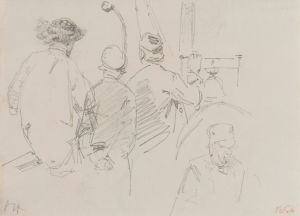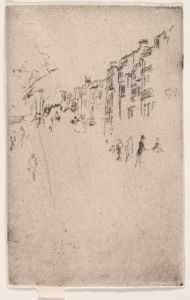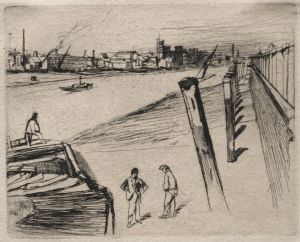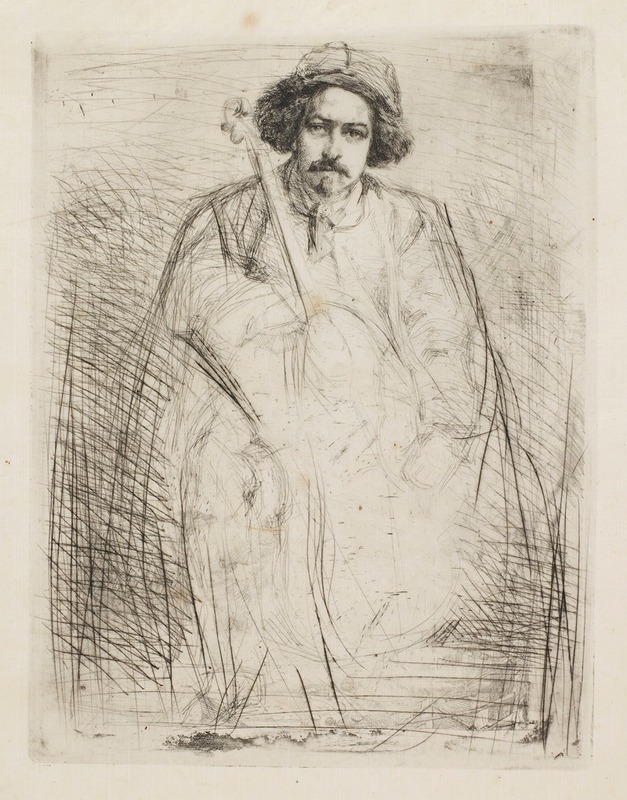
J. Becquet, Sculptor
A hand-painted replica of James Abbott McNeill Whistler’s masterpiece J. Becquet, Sculptor, meticulously crafted by professional artists to capture the true essence of the original. Each piece is created with museum-quality canvas and rare mineral pigments, carefully painted by experienced artists with delicate brushstrokes and rich, layered colors to perfectly recreate the texture of the original artwork. Unlike machine-printed reproductions, this hand-painted version brings the painting to life, infused with the artist’s emotions and skill in every stroke. Whether for personal collection or home decoration, it instantly elevates the artistic atmosphere of any space.
James Abbott McNeill Whistler, an American artist active during the late 19th century, is renowned for his contributions to the art world, particularly in the realms of painting and etching. One of his notable works is the painting "J. Becquet, Sculptor," which exemplifies his distinctive style and artistic philosophy.
"J. Becquet, Sculptor" is a portrait of the French sculptor Jules Becquet, who was a contemporary and acquaintance of Whistler. The painting is believed to have been created around 1867-1868, a period when Whistler was living and working in Paris. This was a time when Whistler was deeply influenced by the artistic movements in Europe, particularly the Realist and Impressionist movements, although he maintained his unique approach to art.
The portrait captures Jules Becquet in a moment of contemplation, seated and surrounded by the tools of his trade. Whistler's technique in this painting reflects his interest in capturing the essence of his subjects with a focus on mood and atmosphere rather than detailed realism. The use of a limited color palette and subtle tonal variations is characteristic of Whistler's work, emphasizing form and composition over intricate detail.
Whistler's approach to portraiture often involved a harmonious balance between the subject and the background, creating a sense of unity within the painting. In "J. Becquet, Sculptor," this is evident in the way Becquet is integrated into his surroundings, with the background elements complementing the figure rather than distracting from it. This technique aligns with Whistler's belief in "art for art's sake," where the aesthetic experience is paramount.
The painting also reflects Whistler's interest in the interplay of light and shadow, a technique he used to convey mood and depth. The subtle gradations of light in "J. Becquet, Sculptor" highlight the sculptor's features and the textures of his environment, adding to the overall sense of introspection and quiet dignity.
"J. Becquet, Sculptor" is part of Whistler's broader body of work that includes portraits, landscapes, and cityscapes. His portraits, in particular, are noted for their psychological depth and the way they capture the character and essence of the sitter. Whistler's ability to convey personality through minimalistic and often abstracted forms is a hallmark of his style.
The painting is housed in the collection of the Philadelphia Museum of Art, where it continues to be appreciated by art enthusiasts and scholars alike. It serves as an example of Whistler's innovative approach to portraiture and his contribution to the evolution of modern art.
Whistler's work, including "J. Becquet, Sculptor," has had a lasting impact on the art world, influencing subsequent generations of artists. His emphasis on tonal harmony, mood, and the aesthetic experience paved the way for future movements that prioritized the emotional and sensory aspects of art.
In summary, "J. Becquet, Sculptor" is a testament to James Abbott McNeill Whistler's artistic vision and his ability to capture the essence of his subjects through a unique blend of realism and abstraction. The painting remains an important piece in the study of 19th-century art and Whistler's enduring legacy.






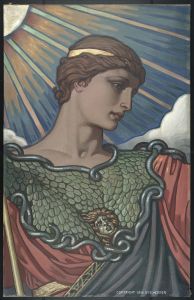


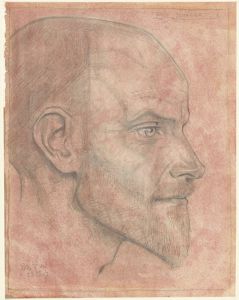
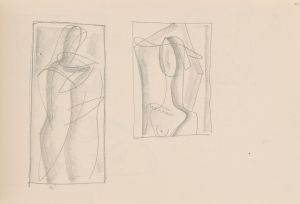
![Designs for theater with black-framed proscenium and boldly colored settings.] [Study for stage light wall decoration, possibly for Caf ̌Crillon](/imgs/249419/s/winold-reiss-designs-for-theater-with-blackframed-proscenium-and-boldly-colored-settings-study-for-stage-light-wall-decoration-possibly-for-caf-crillon-8d25205e.jpg)



